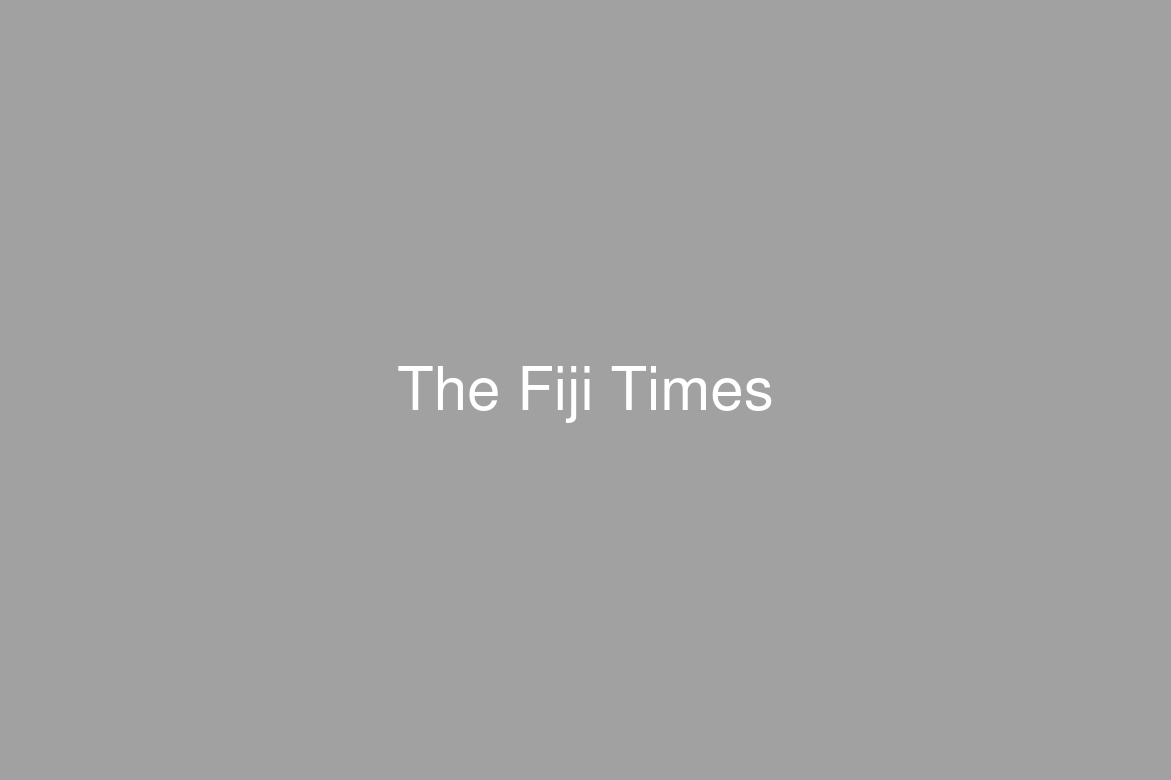GREMLINS got into my laptop and ate through my article “Beauty” in her eye (FT Saturday 17/02/18) and changed the altitude of the Himawari-8 satellite in the opening paragraph! You may have also noted quite a few missing words or sentences or some grammatical errors.
Not until I received a polite note today (20/02/18) from my very good buddy and a friend since 1974 when we first met at USP as students and then trained together and became weather experts who were assigned to localise the previously named New Zealand Meteorological Service to the Fiji Meteorological Service (FMS).
The man no other than the best personality of Fiji for over 18 years as director of the Fiji Meteorological Service Rajendra Prasad, who remained even after many people opted to leave Fiji, until his retirement a few years ago.
His email read: “Sushil, interesting article in last Saturday’s FT. Just note that you got the altitude of Japanese geostationary satellite wrong. It should be 35,800km! Centred over Equator, 140 degrees East (Papua New Guinea).”
Who was going to tell him about the gremlins but it’s great to know that our ever eagle-eyed Mr Prasad, with his invaluable experience, is watching from a distance. Just as an aside, Mr Prasad and I have over 90-man years of experience.
This definitely cannot be taught so it will be some time before the younger meteorologists and scientists at the FMS have full judgment capabilities to handle all aspects of the responsibilities.
The Fiji National University has developed a BSc (meteorology) program as a single and double major with mathematics, computer science, physics, biology and chemistry and is in the process of having an industry advisory committee formed where all the relevant stakeholders, who would benefit from this opportunity, get together and oversight the program so it can be fine-tuned further.
This will allow prospective employers to receive graduates who are industry ready and can hit the ground running.
Presently, students do a science degree and then are sent overseas for one year of professional meteorology training after which they become forecasters and learn on the job as they proceed with their careers.
The BSc (meteorology) will be an inbuilt theory and professional training program where students will learn everything from hydrology, satellite meteorology, weather forecasting, marine forecasting, tropical cyclone genesis and climatology studies, tropical cyclone forecasting, agricultural meteorology, aviation meteorology, research methods and theory, weather observation coding, decoding and chart analysis, climate variability, change and forecasting, radar meteorology and satellite meteorology.
Graduates will be able to do attachment work at a meteorological service, most likely the FMS, after an MOU has been agreed to and signed. Graduates will be work-ready from day one, including working for any national, regional or global meteorological service.
Pacific Islanders, under some development program, will be able to train in our nation.
Now, let us move on to the issue of the Himawari satellite, which is why we are here. Yes, for clarification please note that the Himawari series of geostationary meteorological satellites provides constant and uniform coverage of the earth from around 35,800km above the equator with an orbit corresponding to the period of the earth’s rotation.
This allows for uninterrupted observation of meteorological phenomena such as typhoons, depressions and fronts. Satellite output includes visible imagery, infrared imagery and water vapour imagery.
Visible imagery captures sunlight reflected by clouds and land. Developed rain clouds reflect sunlight well, and thicker clouds appear whiter in visible imagery. At night time, visible imagery is black because of the absence of sunlight. The spatial resolution of visible imagery is 500m at the sub-satellite point.
Infrared imagery captures infrared radiation emitted from clouds, land and the atmosphere. High-altitude clouds are cold and appear white in infrared imagery, while low-altitude clouds and fog are hardly distinguishable from land. As high-altitude clouds may be either well-developed thunderclouds or clear-day cirrus, areas appearing in white are not necessarily associated with heavy rain. The spatial resolution of infrared imagery is 2km at the sub-satellite point.
Water vapour imagery captures 6.2-micrometre infrared radiation emitted by water vapour in the atmosphere. As atmospheric water vapour absorbs and emits such radiation, areas containing large amounts of vapour in the upper and middle troposphere appear white in this type of imagery. It shows atmospheric humidity and the atmospheric stream via a series of animated images.
In addition, colour-enhanced imagery is derived from the above output. This type of imagery shows cloud-top heights in rainbow-like colours superimposed on to visible imagery (day time) and infrared imagery (night time). Cloud-top heights are estimated from the intensity of infrared radiation emitted from clouds. Red is used to indicate the possible presence of well-developed thunderclouds.
Getting back to the Fiji-trained weatherman and women of the future, it should be noted that career pathways of these graduates will guarantee their being able to fill many roles because of their second major also being a science degree. I foresee in the long run, science teachers, hydrologists, meteorologists, climatologists, research scientists, environmental scientists, science writers and the like coming out of this program.
Back to Mr Prasad, my sincere thanks to him for keeping a lookout over us, albeit from a distance. Maybe, over time, many old scientific people like us may be back in the fold and provide some of our forecasting and scientific experience to Fiji, as Fiji and its people are in our hearts.
* Dr Sushil K Sharma is an associate professor of meteorology at the Fiji National University. Views expressed are his own, and not that of FNU or this newspaper.



